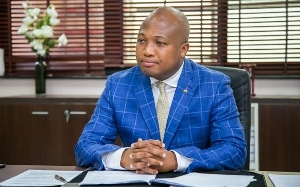Several months ago, the Bank of Ghana informed the people of Ghana that it would “re-denominate” the national currency, the Cedi. The underlying reasons advanced by the Bank of Ghana as necessitating this course of action relating to our national currency seem unassailable. Indeed, some of us were asking: “What took them so long”?
The country was anxiously awaiting the “release” of the pictorial representation of the new currency and the necessary and inevitable “education” that goes with it for several months. I was in Ghana for a short business trip when the Bank of Ghana finally released the pictorial representation of the new currency for the country. The pivotal educational aspect of that change-over process started in earnest. From what I saw, when I was in Ghana, and what I have seen - principally on the internet - the Bank has fully engaged the nation in the education of the currency re-denomination of the Cedi exercise. That is all well and good. But, as I see it, there are severe problems in this endeavor. What the pictorial representations of the new Cedi in its various denominations created by the Bank of Ghana suggest to me is an unmistakable devaluation of the God-endowed worth of the diversity and range of the cultural and artistic beauty that define our nation - from the north to the south and from the east to the west.
The Bank of Ghana is telling the nation that, presumably, after several strictly behind closed-door meetings, what they have to show the nation as defining the range of the beauty and cultural representation is the composite picture of the “Big Six”: a repeat from the “old” ¢10,000 note - repeated five times over - the only picture for the front of each of the new Cedi - NG¢1, NG¢5, NG¢10, NG¢20 and NG¢50. With all due respect to the decision makers from the Bank of Ghana, this one-dimensional photographic image of the “Big Six”is nothing more than a costly stunning failure, an embarrassing denial of a meaningful measure of our national cultural definition. Furthermore, the background colorization to those pictures, designed to distinguish, for example, NG¢20 from NG¢50 is not clear enough. They tend to emphasize the endemic failures within.
The notion that one - and only one - composite photographic representation of the “Big Six” in our political history is chosen to adorn and define our national currency, to the exclusion of practically thousands of authentic national cultural representations of our nation is shocking to me. Did the Bank leadership consult with the political leadership of our country before “settling” on this one-dimensional picture for our currency? Did they consult with themselves in a truly reflective mood to extract from among themselves, the best pictorial representation of our nation on our new Cedi currency? Did they consider the inherent educational difficulties that will inevitably come into play when teaching our still largely predominantly illiterate community, about the new currency. The fact is that most of our people derive their practical recognition of value entirely from pictorial representation of such value. Pictures define and determine the value. We owe it to them and ourselves to make that educational process easy for all.
It is no defense in this colossal error to say that the “back”of each of the new Cedi denominations has some different pictures denoted thereat. If it were not so expensive to go back to the drawing board - so to speak - and so late in the day, I would have strongly advocated that the new Cedi currency should be replaced with a more culturally appropriate and diverse pictorial representation of our people and our country. After all, a country’s currency generally speaks to the nation and defines the nation, and reflects as best as it can, the images that truly represent its wholesome sovereign identity. What the Bank of Ghana has imposed upon us now is not only inadequate, but grievously betrays that wholesome definition that our nation demands.




















